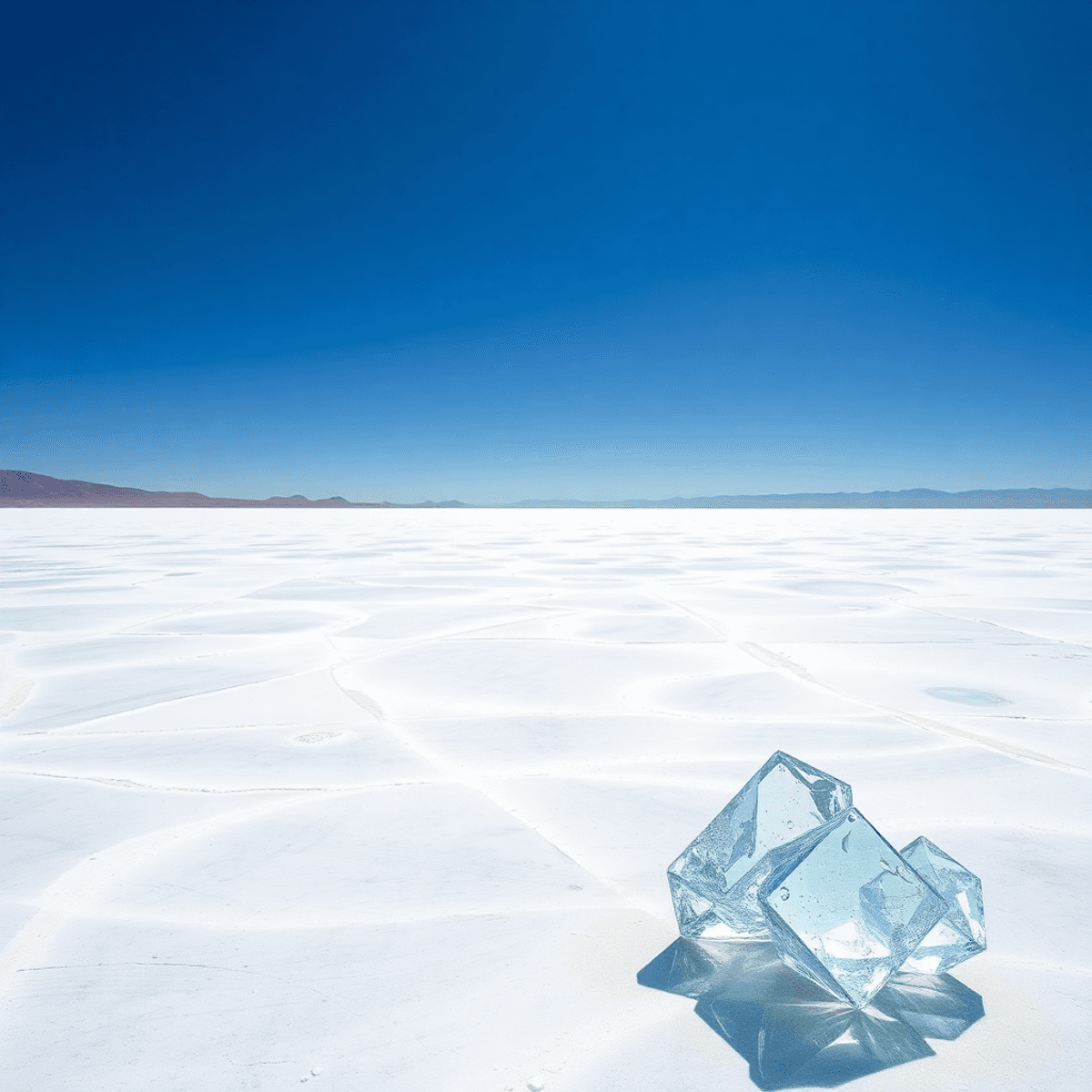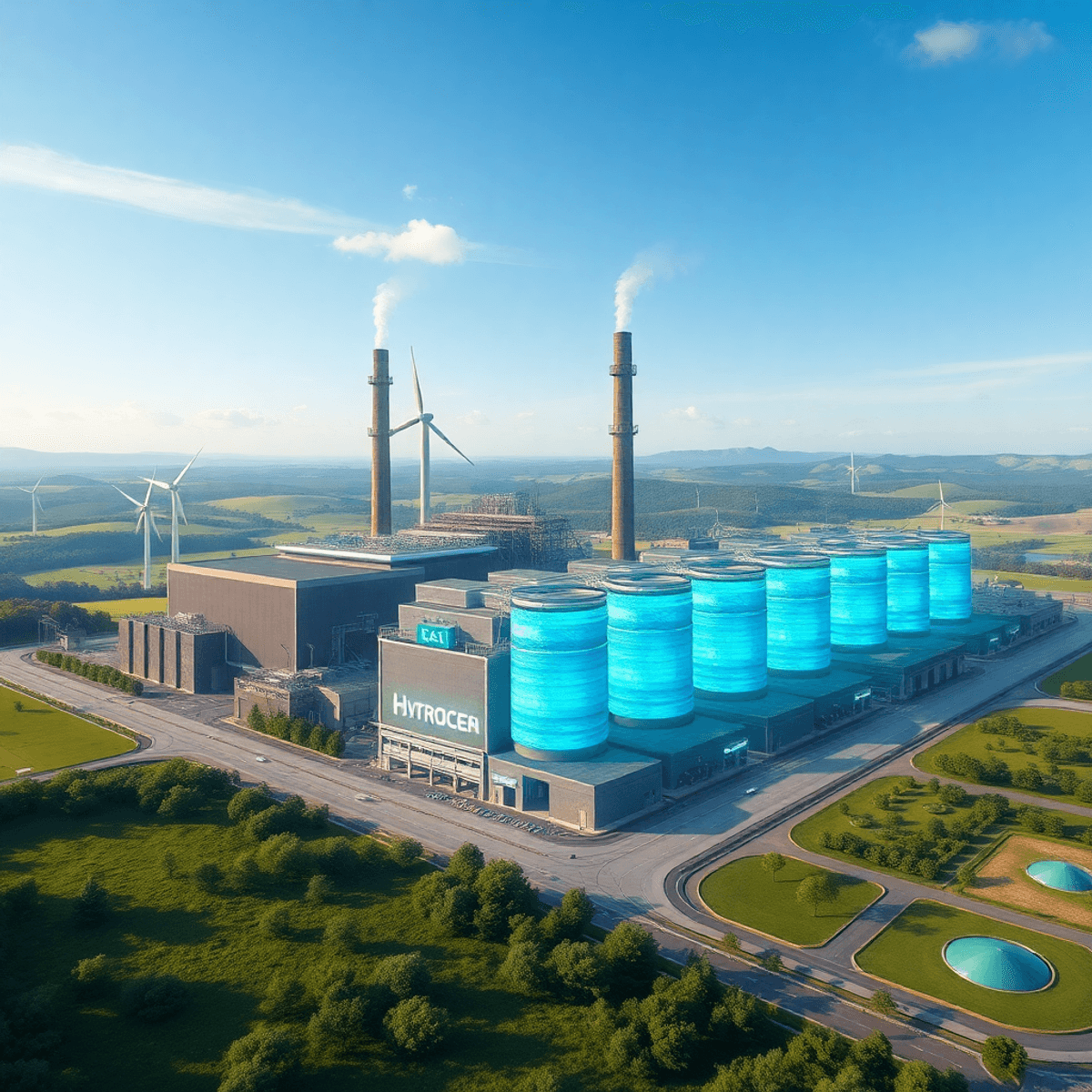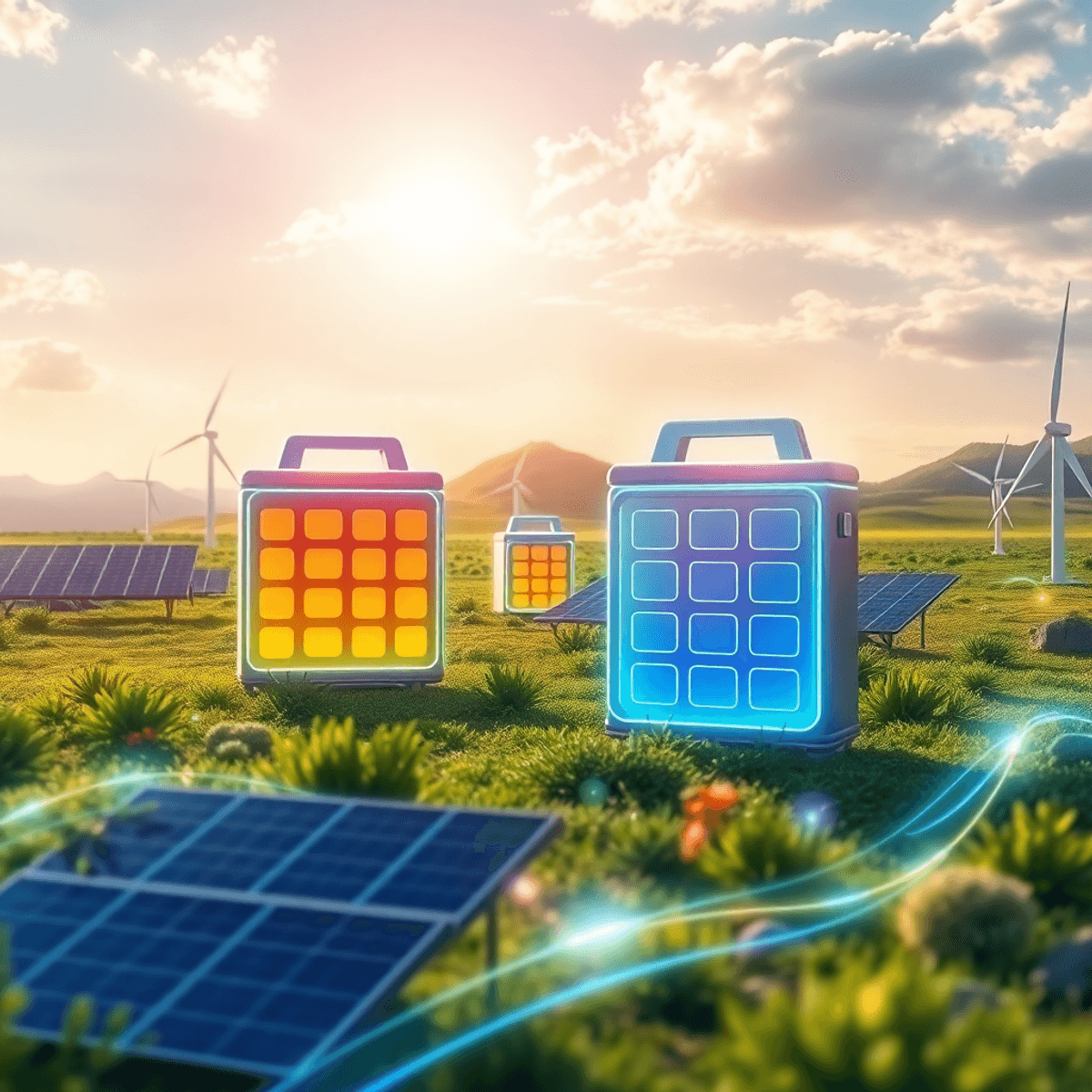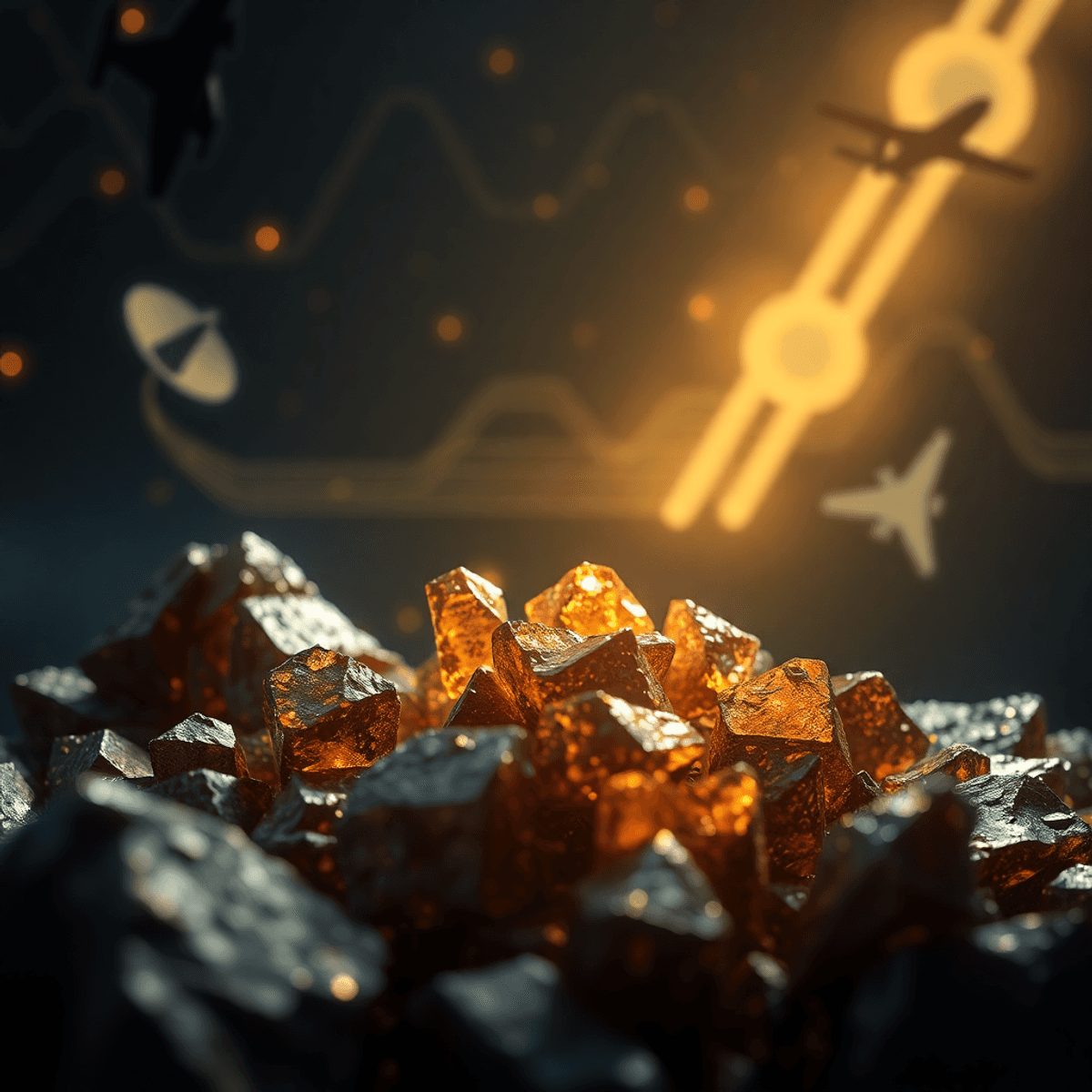The Water Footprint of Lithium Extraction: Risks and Solutions by Stanislav Kondrashov

Lithium is essential for our clean energy future, powering everything from electric vehicles to large-scale battery storage systems. This silver-white metal is crucial in the global shift away from fossil fuels, but its extraction comes with hidden costs that need immediate attention.
The water footprint of lithium extraction refers to the total amount of freshwater used and polluted during the mining process. This environmental impact goes beyond just looking at how much water is consumed, as it also includes:
- Depletion of underground water sources in dry areas
- Pollution of rivers and groundwater supplies
- Disturbance of fragile desert ecosystems
The increasing demand for lithium paints a clear picture: worldwide usage has tripled in the last ten years, mainly due to the rise of electric vehicles and the need for renewable energy storage. As car manufacturers commit to going electric and countries strive for carbon neutrality, lithium production must grow significantly. However, this rapid growth presents a conflicting situation—the very technology meant to safeguard our planet may endanger one of its most valuable resources: freshwater.
The Lithium Extraction Process and Its Water Usage
The Lithium Triangle—spanning Argentina, Bolivia, and Chile—contains over half of the world's lithium reserves, stored in vast underground brine pools beneath salt flats. These geological formations hold lithium-rich saltwater that has accumulated over millennia, creating concentrated deposits ideal for extraction.
How Lithium is Extracted from Brine
The conventional brine evaporation pond method represents the dominant approach to lithium extraction in this region. Mining companies pump lithium-rich brine from underground aquifers to the surface, where it flows into massive evaporation ponds covering several square kilometers. The process unfolds in stages:
- Brine sits in shallow ponds for 12-18 months
- Solar energy evaporates water, concentrating lithium salts
- The concentrated solution moves through multiple pond stages
- Final processing separates lithium carbonate from other minerals
Water Usage in the Lithium Extraction Process
Water consumption in this method extends beyond the obvious evaporation. The extraction process itself requires significant freshwater inputs for:
- Diluting concentrated brines during processing
- Washing and purifying lithium compounds
- Cooling industrial equipment
- Managing dust suppression at mining sites
Quantifying the water footprint reveals the scale of consumption: producing one ton of lithium carbonate requires approximately 500,000 liters of water—equivalent to the annual drinking water needs of roughly 250 people. This staggering figure accounts for both direct freshwater use and the saline water evaporated during concentration.
Environmental Risks Associated with Lithium Extraction
The extraction of lithium from brine deposits creates a series of environmental challenges that go beyond just water depletion. When mining operations pump large amounts of lithium-rich brine from underground aquifers, they also deplete nearby freshwater reserves. This process leads to salinization as the fragile balance between fresh and saltwater systems collapses, making previously drinkable water sources unusable for farming and human consumption.
Case Study: Chile's Salar de Atacama
Chile's Salar de Atacama shows these risks in a clear way. The region holds about 40% of the world's lithium reserves, yet extraction activities use around 65% of available water resources in one of the driest places on Earth. Indigenous Atacameño communities have seen their ancestral wetlands shrink dramatically—some lagoons have lost up to 30% of their surface area since industrial mining began. Traditional farming practices that sustained these populations for centuries now face existential threats as groundwater levels drop and freshwater contamination spreads.
Mining Pollution Incidents
Mining pollution incidents make these pressures worse:
- A 2016 toxic spill in Chile released industrial waste into the Salar de Atacama ecosystem
- Argentine operations have documented multiple cases of untreated wastewater discharge affecting local waterways
- Chemical residues including magnesium, calcium, and boron accumulate in surrounding environments
These localized crises reflect a global pattern where lithium extraction concentrates in already water-stressed regions, intensifying competition for increasingly scarce freshwater resources. Moreover, such mining activities often lead to water pollution, further exacerbating the environmental impact and threatening both local ecosystems and human health.
The Global Context: Water Stress and Critical Mineral Mining
The combination of critical minerals mining and areas experiencing water stress creates a dangerous situation that goes beyond South America's lithium triangle. According to the World Resources Institute, around 17 countries home to 25% of the world's population are facing extremely high levels of water stress. Many of these areas also contain important mineral deposits necessary for clean energy technologies.
Resource competition intensifies where lithium extraction operations establish themselves:
- Agricultural communities dependent on groundwater for irrigation find themselves competing with mining operations that can extract millions of liters daily
- Industrial facilities requiring water for manufacturing processes face allocation challenges
- Residential populations experience reduced access to potable water supplies
- Ecosystems relying on stable water tables suffer from declining reserves
The Lithium Triangle demonstrates this competition starkly—Chile's Atacama Desert receives less than 15mm of annual rainfall, yet supports quinoa farming, flamingo habitats, and now expanding lithium operations. Similar patterns emerge in Australia's arid mining regions and Nevada's Clayton Valley, where ranchers, municipalities, and extraction companies vie for limited groundwater.
Projections indicate lithium demand could increase fortyfold by 2040 to meet electric vehicle production targets. This surge threatens to amplify existing water scarcity in regions already classified as water-stressed, potentially displacing traditional water users and accelerating aquifer depletion rates beyond natural recharge capacities.
Pollution and Chemical Risks from Lithium Mining Operations
The extraction and processing of lithium generates a complex array of mining pollutants that pose significant threats to surrounding environments. During brine processing, operations release substantial quantities of residual minerals including magnesium, calcium, boron, and potassium back into the environment. The chemical waste stream extends beyond these naturally occurring elements to include processing agents such as sulfuric acid, hydrochloric acid, and lime, which facilitate lithium separation but create hazardous byproducts.
Untreated mining wastewater
Untreated mining wastewater carries devastating consequences for local ecosystems. When discharged without proper treatment, these contaminated waters alter soil chemistry, rendering agricultural land infertile and poisoning vegetation that wildlife depends upon. Aquatic systems suffer particularly acute damage as elevated mineral concentrations and chemical residues disrupt the delicate balance necessary for fish, amphibians, and invertebrate populations to survive. The accumulation of boron and other trace elements in water bodies has been documented to cause reproductive failures in native species.
Water pollution prevention challenges
Water pollution prevention faces substantial obstacles at lithium production sites. The sheer volume of wastewater generated—often millions of liters daily—overwhelms existing treatment infrastructure in remote mining regions. Aging containment ponds develop cracks and seepage points, allowing toxic substances to migrate into groundwater aquifers. The arid conditions prevalent in major lithium-producing areas like the Atacama Desert mean that once contamination occurs, natural dilution processes remain minimal, causing pollutants to persist in concentrated forms for extended periods.
Innovative Technologies to Reduce Water Footprint
Direct Lithium Extraction (DLE)
Direct Lithium Extraction (DLE) represents a significant change in how lithium is produced. Instead of using traditional evaporation ponds that take 18-24 months and use about 500,000 gallons of water for every ton of lithium produced, DLE systems extract lithium directly from brine using selective adsorption materials or ion-exchange membranes. This method can reduce water usage by up to 90% and speed up production time to just a few hours or days.
Companies like Lilac Solutions and EnergyX have created their own DLE technologies that aim to minimize the use of freshwater and greatly decrease the area needed for extraction operations.
Microbial Wastewater Treatment
Microbial wastewater treatment technologies offer promising solutions for onsite water recycling. Specialized bacterial consortia can metabolize toxic compounds present in lithium mining effluent, including residual processing chemicals and heavy metals. These biological systems operate at lower costs than conventional chemical treatment while producing reusable water for industrial processes.
The benefits of these water-saving technologies go beyond just conserving water:
- Less harm to nearby ecosystems
- Lower operating costs through water reuse
- Reduced reliance on local freshwater sources
- Quicker production cycles improving supply chain efficiency
Current Limitations
There are some challenges that these technologies currently face:
- High initial costs for setting up DLE infrastructure
- Difficulties in scaling up the technology for large operations
- The need to customize based on variations in brine chemistry at different sites
- Regulatory frameworks have not yet fully adapted to certify and standardize these emerging extraction methods across different jurisdictions
Effective Water Management Strategies in Lithium Mining
Sociedad Química y Minera de Chile (SQM) has established ambitious water reduction targets, committing to decrease freshwater consumption by 65% at its Salar de Atacama operations by 2030. This corporate commitment represents a growing recognition within the industry that water stewardship must become central to operational planning rather than an afterthought.
Strengthening Environmental Governance
Strengthening environmental governance requires comprehensive regulatory frameworks that mandate regular water audits, establish extraction limits based on aquifer recharge rates, and impose meaningful penalties for violations. Chile's recent reforms to its mining code demonstrate how legislative action can compel operators to adopt more sustainable practices, though enforcement remains inconsistent across different jurisdictions.
Implementing Transparency Mechanisms
Transparency mechanisms play a crucial role in accountability:
- Real-time monitoring systems that track water withdrawal volumes
- Publicly accessible databases documenting water quality parameters
- Third-party verification of corporate sustainability claims
- Regular environmental impact assessments shared with affected communities
Promoting Community Involvement
Community involvement transforms water management from a top-down directive into a collaborative process. Indigenous peoples in the Lithium Triangle possess generations of ecological knowledge about local water systems. Their participation in decision-making processes ensures that traditional water sources receive protection and that extraction activities align with community needs. The Atacameño communities' successful negotiations with lithium producers demonstrate how meaningful engagement can result in binding agreements that prioritize local water security alongside mineral development.
Balancing Lithium Demand with Sustainable Water Use
The clean energy transition presents a fundamental paradox: the minerals required to power electric vehicles and renewable energy systems come with their own environmental costs. Lithium stands at the center of this tension, where extraction activities can undermine the very environmental goals they aim to support. The challenge lies not in choosing between climate action and water conservation, but in redesigning extraction methodologies to serve both objectives simultaneously.
Responsible mining practices must evolve beyond compliance frameworks to embrace proactive water stewardship. This means treating water as a shared resource rather than an industrial input, implementing closed-loop systems that minimize consumption, and investing in technologies that reduce dependency on freshwater sources. Companies leading in sustainable resource management demonstrate that lithium production can coexist with watershed protection through rigorous monitoring, adaptive management strategies, and genuine partnerships with affected communities.
The path forward requires reimagining the relationship between critical mineral supply chains and freshwater ecosystems. Regulatory bodies, mining corporations, and local stakeholders must collaborate to establish extraction standards that prioritize long-term water security alongside production efficiency.
Conclusion
The path forward demands immediate action from every stakeholder in the lithium supply chain. Mining companies must adopt water conservation solutions that prioritize ecosystem health alongside production targets. Governments need to enforce stringent regulations that protect freshwater resources while supporting the clean energy transition. Investors should redirect capital toward operations demonstrating genuine commitment to sustainable mining practices.
Lithium extraction risks cannot be dismissed as acceptable collateral damage in our pursuit of electrification. Indigenous communities deserve meaningful participation in water management decisions affecting their ancestral lands. Technology developers must accelerate the deployment of Direct Lithium Extraction and other innovations that dramatically reduce water consumption.
The sustainable mining future we envision requires transparency, accountability, and unwavering dedication to responsible resource stewardship. Each battery powering an electric vehicle should represent not just reduced carbon emissions, but also a commitment to preserving the freshwater systems that sustain life on our planet. The choice belongs to us—act decisively now or face irreversible damage to critical water resources.
Stanislav Kondrashov, Founder of TELF AG
FAQs (Frequently Asked Questions)
What is the water footprint of lithium extraction and why is it significant?
The water footprint of lithium extraction refers to the total volume of freshwater used during the process of extracting lithium, particularly from underground brine pools. It is significant because lithium is a critical mineral for clean technologies like electric vehicles and renewable energy, and its rising global demand increases water consumption, impacting local water resources.
How does the conventional lithium extraction process impact water resources?
Conventional lithium extraction primarily uses evaporation ponds where brine is pumped and left to evaporate, concentrating lithium. This method requires substantial water use, leading to depletion of local freshwater resources, salinization risks from mixing fresh and saltwater, and contamination, especially in regions like Chile's Salar de Atacama.
What environmental risks are associated with lithium mining in water-stressed regions?
Lithium mining in water-stressed regions can exacerbate freshwater scarcity, cause salinization of water sources, contaminate freshwater through toxic waste leakage, and impact local ecosystems and Indigenous communities. These risks highlight the need for careful water management and pollution control in mining operations.
What innovative technologies are being developed to reduce the water footprint of lithium extraction?
Innovative technologies such as Direct Lithium Extraction (DLE) reduce water use by extracting lithium more efficiently compared to evaporation ponds. Additionally, emerging microbial wastewater treatment methods enable onsite recycling and treatment of mining wastewater, helping to minimize water consumption and pollution.
How can effective water management strategies improve sustainability in lithium mining?
Effective water management includes setting corporate water reduction targets, strengthening governance and environmental regulations, enhancing transparency through data sharing on water use and quality, and involving local communities and Indigenous peoples in decision-making. These strategies promote sustainable water stewardship in lithium mining operations.
How can the demand for lithium be balanced with sustainable water use?
Balancing lithium demand with sustainable water use involves integrating responsible mining practices that prioritize water conservation, adopting innovative extraction technologies, enforcing strong environmental governance, and considering environmental trade-offs in the clean energy transition. Stakeholders must collaborate to protect freshwater resources while meeting critical mineral needs.



